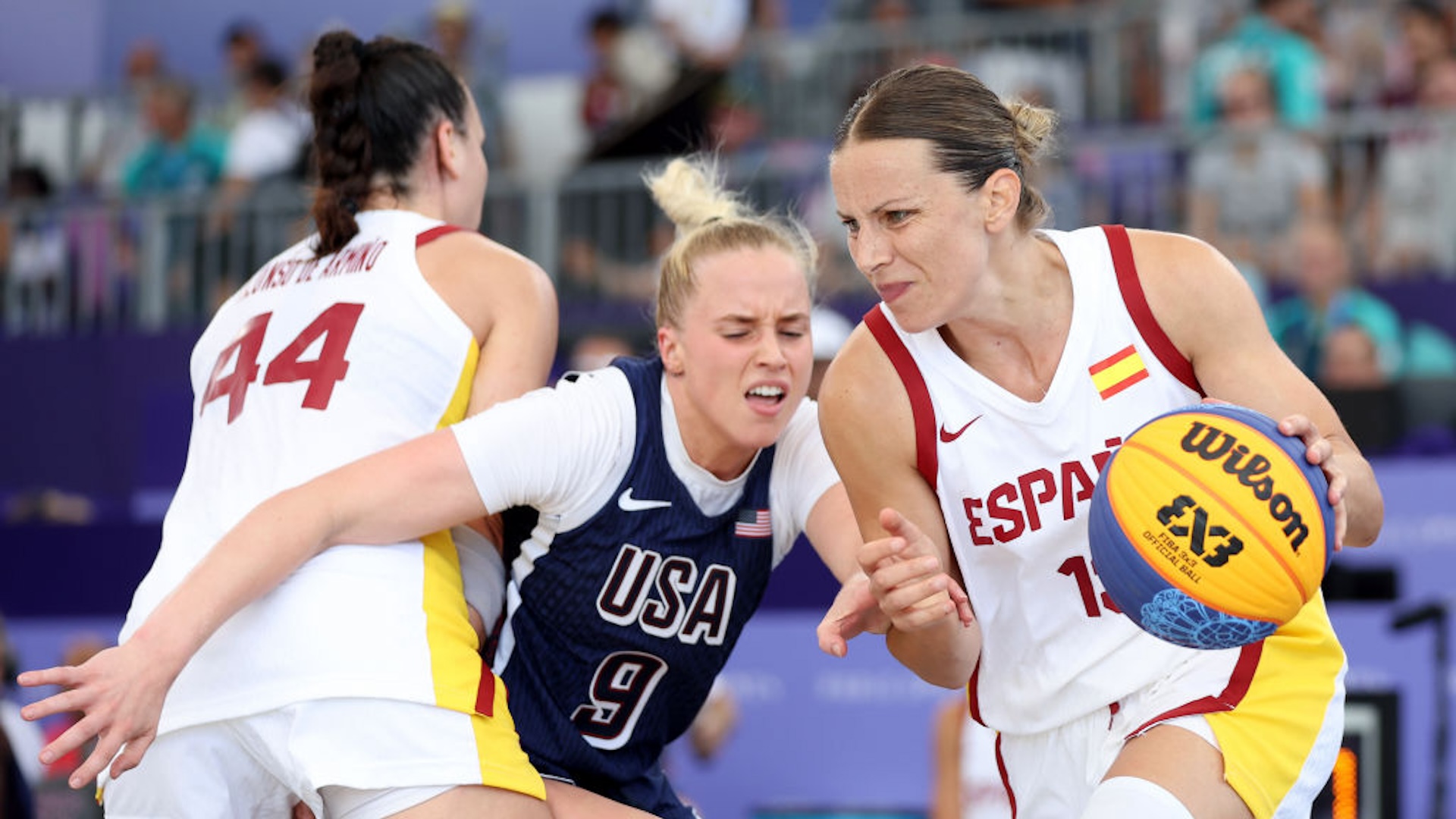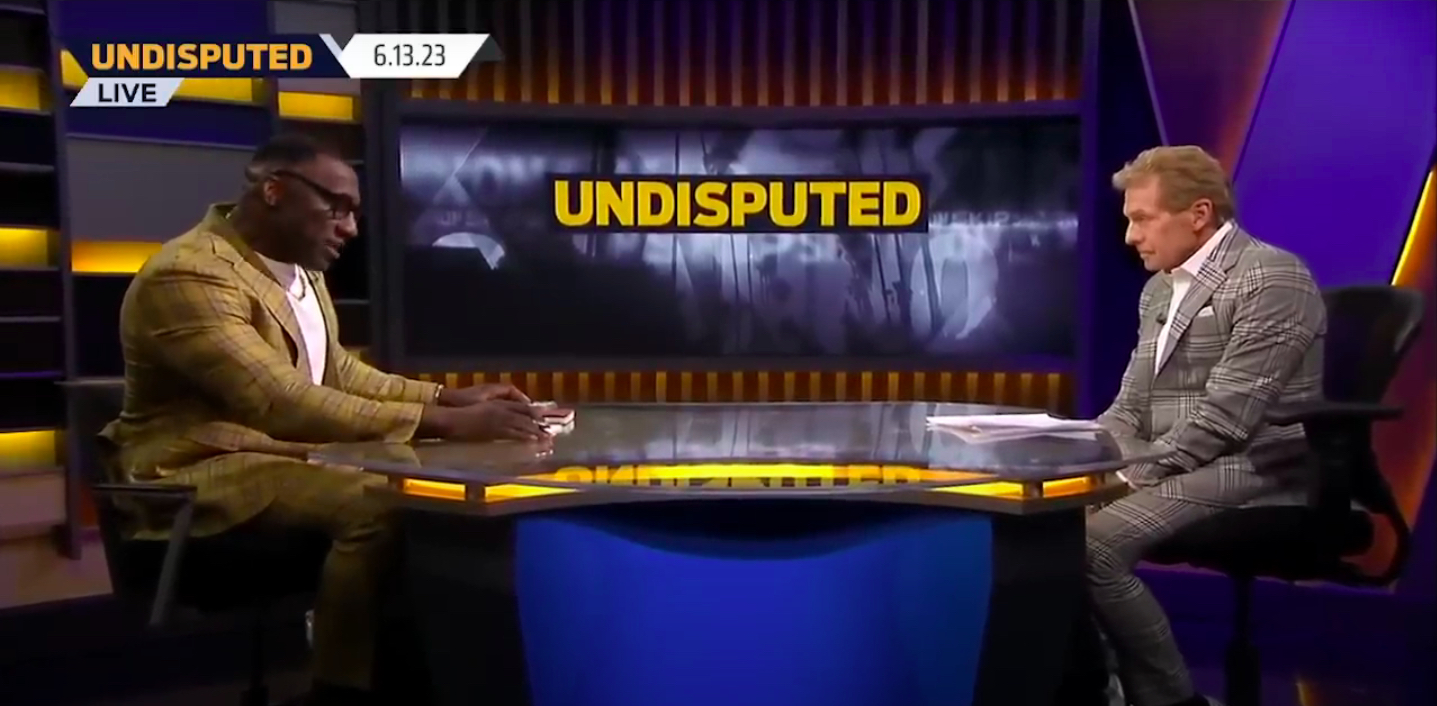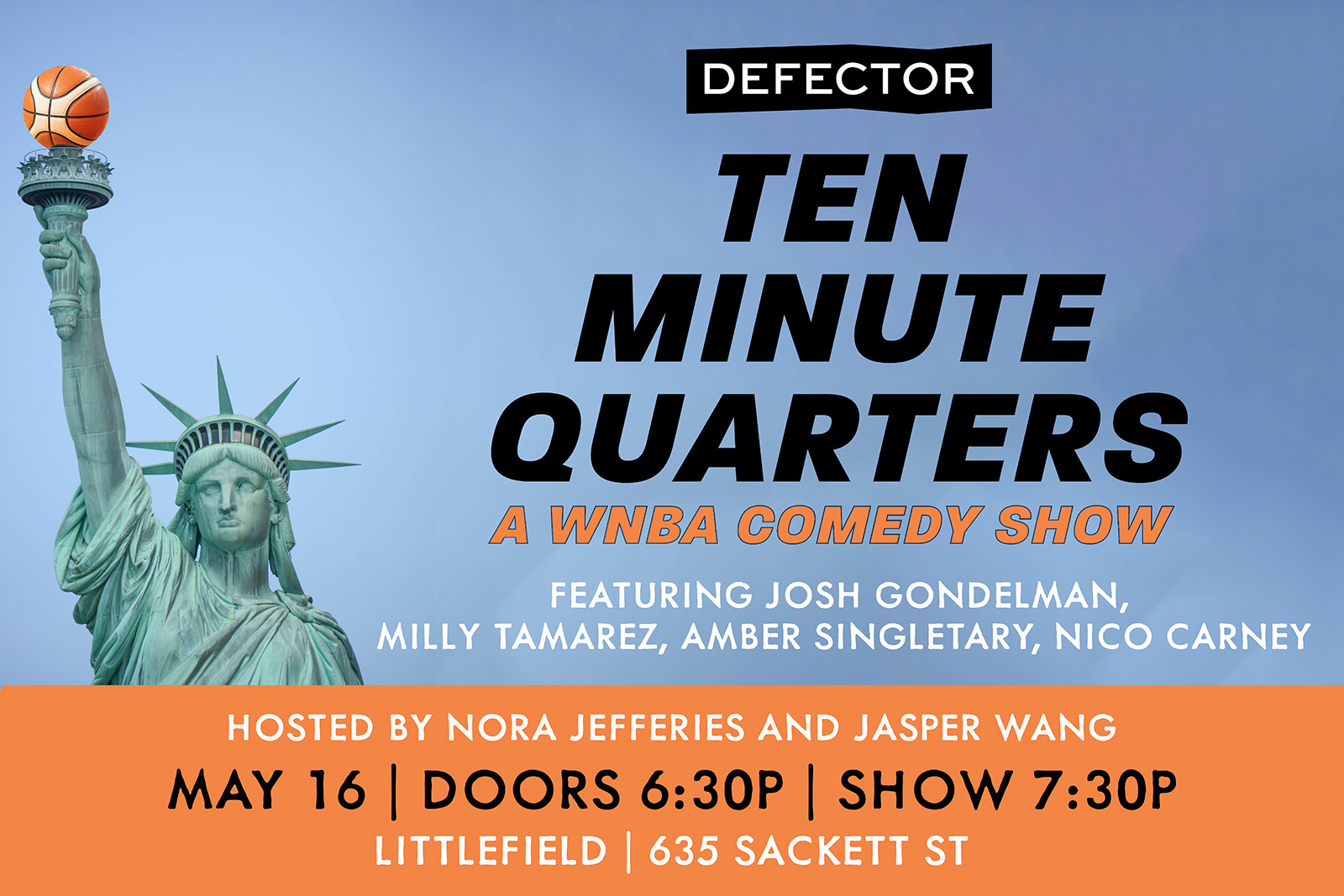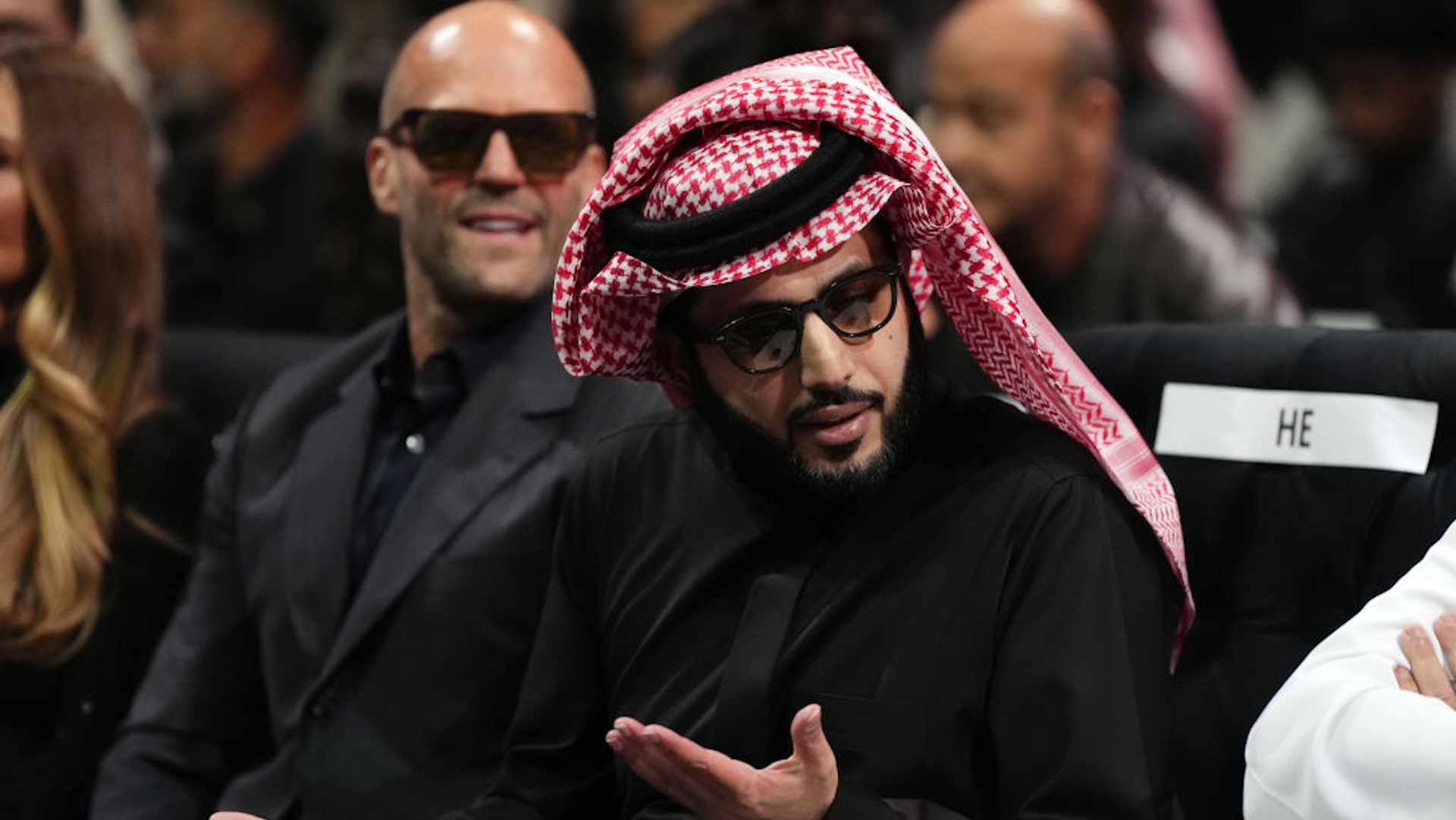PARIS — On a basketball court at the 2024 Olympic Games, in a matchup between the teams that would go on to win gold and bronze, a veteran hooper knocked down a shot from distance to make the score 3-3.
Fans of his team applauded. So did many neutrals. It was like most any other moment on hardcourt. Then, over the loudspeaker, the P.A. announcer said: “3-3, like brie brie!”
This was Netherlands vs. Lithuania in the looser, friendlier 3x3 (pronounced, officially, “three ex three”) basketball tournament, contested for just the second time at an Olympics and for the first time as intended: in front of a full house of fans, with two announcers-slash-emcees trading puns and running commentaries in English and French, with a DJ spinning non-stop pop songs during gameplay, and with rarely a recognizable name on the court.
Over the last two weeks, I sat through seven games of 3x3 Olympic basketball. I wanted an answer to the question that arises any time a new, modern sport is added to the Olympic menu: Does this really belong here? In the case of 3x3—with a festive atmosphere inside the arena but some heavy criticism coming from outside of it—the answer seems to be: It depends on what you’re looking for.
Words like “urban” and “youth culture” get thrown around in articles and press releases about 3x3’s addition to the Games, and the Olympic Committee’s reason for adding it does seem to stem from a desire to make the Games more modern. Both the summer and winter Games have been adding more contemporary-feeling sports in recent decades, such as beach volleyball (in Atlanta 1996), snowboarding (Nagano 1998), and skateboarding, sport climbing, and surfing (Tokyo 2020).
Though it has been touted by the IOC as “the most widely played urban team sport in the world,” this specific, FIBA-sanctioned version of 3x3 didn’t officially debut until the 2010 Youth Olympic Games in Singapore, with FIBA then overseeing a world tour, a World Cup, and more.
Advocates got their moment at the 2020 Tokyo Games, where 3x3 debuted as part of an overall “urban festival” concept centered around the more “city” sports, like aforementioned newcomers skateboarding and sport climbing, as well as holdovers like BMX.
Then COVID-19 struck, and this vision was mostly dashed. The venue was still built, and these sports were still contested, but instead of thousands of fans being gripped by the tense action, 3x3 got visits from the likes of Jill Biden, Emmanuel Macron, and few others.
Biden “brought all the energy,” U.S. star Kelsey Plum said after a game, but organizers surely imagined more than the U.S. first lady and the French president being responsible for creating hype. So did Macron, who told L’Equipe, “We all hope there will be more atmosphere in Paris.”
There was.
Paris turned Place de la Concorde—a famous (or infamous) public square known as the guillotine site for Louis XVI and Marie Antoinette—into “Parc Urbain,” a huge, 25,000-capacity complex serving as home to the official 3x3, BMX, skateboarding, and breaking competitions.
Fans with tickets to one sport could show up for their event and, when it was over, hang out in the park afterward, maybe walking to another sport’s nearby venue and craning their necks to see a different competition. The area included activities and entertainment; fans could even play basketball on temporary hoops. For those who missed out on tickets to specific events, the Games sold admission to the park alone, which ran a little under $30 including fees and, while not allowing for a seat to any of the competitions, still offered a chance to witness, from a close distance, Olympic action—sometimes medal rounds—for relatively little money.
This might not sound all that exciting in theory, but it was quite an impressive and at times electric setup, especially at night when the open end of the 3x3 arena was packed with standing-room-only supporters. And, judging from the fact that Parc Urbain tickets during the final days of 3x3 were being snapped up within seconds of being posted on the Olympics’ official resale site, fans in Paris were enjoying the show.
Inside the 3,900-seat, pop-up 3x3 arena, which was open-air but covered to protect the players and the gray court from the elements, the atmosphere was mostly jovial, bringing a mix of standard Olympic festivities, simulated “street” feel, and distinct Frenchness.
With as many as eight nations competing in a single, four-game session, the stands boasted fans clad in any number of colors—although, with the French men’s and women’s teams both in the field, those of the Gallic persuasion tended to make up the majority.
During game action, English-language emcee Knowa Lazarus and his French-language counterpart Vincent Royet kept the chatter up, all to a soundtrack from DJ Lass. Lazarus was full of those aforementioned puns and rhymes and wordplays that followed key moments—everything from a generic “slash cash off the glass,” to location-specific reactions like “wetter than the French Riviera” and “buttery soft like a croissant in the morning.” (Royet joined in every once in a while, like when he pushed Lazarus to change his call of “It’s good!” to “C’est bon!”)
Lass, meanwhile, often played global contemporary hits, but also tailored some music to the nations involved; when the Spain women played Australia, he spun a track featuring Spanish singer Álvaro Soler, then put on AC/DC’s “Highway to Hell.”
Then there was that undeniable Frenchness. Royet spent much of his time firing up the home crowd, regularly putting a sheet of paper marked “FRANCE?” in front of a nearby camera; the crowd yelled and screamed every time. (When he displayed a paper for Germany, it elicited rousing boos; Germany was the only country that got jeered during any of the seven matches.) Then there was the between-the-matches music, which provided a real window into the culture; if you think Americans know and love “Sweet Caroline,” wait until you hear thousands of French people of all ages happily sing along to Joe Dassin’s “Les Champs-Élysées,” or passionately belt out Johnny Hallyday’s rousing epic “Que Je T'aime.”
But how was the hoops?
In 2017, when 3x3 was announced as an Olympic sport, then-FIBA secretary general Patrick Baumann referenced Rucker Park as an inspiration. This was not that. And it goes without saying that 3x3 is not like the 5-on-5 competition, which even with the international quirks is more or less like the NBA product.
It has some of the hallmarks of playground hoops—games go to 21, the ball must clear the three-point line before the opposing team can start its possession—but many major differences. In Olympics 3x3, there’s a 12-second shot clock. There are no checks to start possessions, nor is there a “make-it, take-it” rule; as soon as a basket is good, the shot clock begins and the opposing team must get the ball quickly beyond the arc. Even the ball is different, smaller than a regulation men’s ball but weighing the same.
This setup creates a more chaotic frenzy than the famously free-flowing, showboating style that streetball is famous for. Stops are rare and the pace is relentless; France coach Karim Souchu in 2021 called it “cardio basketball.” Backdoor cuts and give-and-gos are preferred to iso-ball. Dunks exist but are not prevalent. “Hero” shots are less by design than necessity. There can be some very ugly heaves at the end of the 12 seconds.
What it does share with most outdoor games is the physicality. Hand checks and reach-ins are mostly allowed, although there can be some frustrating inconsistency between refs. (During a women’s game between France and Germany, an angry German fan loudly declared the lack of foul calls “Stupid!” while complaining in English with some nearby Dutch supporters.)
"It's just a tough game,” USA player Hailey Van Lith told ESPN. “It's really gritty. It's for the tough people. You can't be soft and play."
Games are 10 minutes, whether or not any team has reached 21. Three-pointers count as two and two-pointers count as one. A shooting foul—and fouls are indeed called sometimes—on a “one-pointer” gets you one free throw, but if your team accumulates six fouls, every subsequent violation gets the opposing team two shots. It’s two shots plus possession after the ninth foul. And games end quickly. Blink and you might miss a 3x3 finish, like the dramatic men’s gold medal game with its stunning overtime winner from the Netherlands’ Worthy de Jong (named, yes, after James Worthy). In 5-on-5, with all the fouls, free throws, timeouts, and reviews, you can doze off a bit and still catch the end.
These factors, put together, tend to keep games within reach and create plenty of opportunities for upsets. And yet, only the biggest 3x3 evangelists would claim this is peak hoops. There is a sloppy quality to it, and because of FIBA’s rules, you aren’t watching the world’s best basketball players, and it shows.
As early as 2019, observers were pointing out issues with the fledgling game. This continued into Tokyo but really picked up during the Paris Games, with 3x3 being called a “mess,” and even derisively referred to as a “sport” (in scare quotes) that “stinks.”
Some critics were careful to point out that they just want the gameplay to be better, with suggestions ranging from a longer shot clock to the implementation of that aforementioned “make-it, take-it” rule. But I get the sense that a lot of these complaints would be much quieter if there were simply better players in the tournament, particularly on the American team.
At the Tokyo Games, the U.S. women won gold. Other than that, it’s been a rough go for the Americans in 3x3 at the Olympics. In Paris, the women lost their first three games—to Germany, Azerbaijan, and Australia—before storming back to a 4-3 pool-play record. But a loss to Spain in the semifinals relegated them to the bronze-medal match vs. Canada (which they won).
For the men, it’s been far worse. In Paris, they won just two of seven games—including a 21-6 rout vs. the Netherlands—and missed the knockout stages. And in Tokyo, an upset in qualifying kept them out of the Games altogether.
Meanwhile, the women’s 3x3 gold medalist in Paris was Germany; their women’s 5-on-5 team has never won an Olympic medal. The men’s 3x3 gold medalist in Paris was the Netherlands; their men’s 5-on-5 team has never even competed at the Olympics.
So why the disparity? Why isn’t the USA, whose men’s and women’s 5-on-5 teams often look unbeatable, better? That’s down to FIBA’s rules, which requires competitors to have specific ranking points that are only gained by competing in official 3x3 events.
Thus, the U.S. couldn’t simply grab four of the best players who didn’t make the final Paris 5-on-5 roster and roll them out for 3x3. Well, it could, if those NBA players competed in the requisite events, but there’s little incentive for well-paid NBA players to head to far-flung locales for 3x3. Instead, their men’s roster consisted of largely unknown (with one key exception) FIBA 3x3 circuit regulars. This included audio producer Kareem Maddox, underhanded free-throw practitioner (and son of Hall of Famer Rick Barry) Canyon Barry, and, the exception, Jimmer Fredette, who switched to 3x3 in 2022, the rare former NBA player in an official 3x3 tournament.
Fredette’s Games didn’t last long, though, thanks to an early injury. Stuck with only three players as injury replacements are not allowed, and the U.S. went out quietly.
Such a lack of starpower has led to a venerable inquest from Americans regarding how to get better players on the team. (Ice Cube, unsurprisingly, has been calling for Big3 players to be included for years.)
But even if the U.S. had a more talented squad, winning wouldn’t be guaranteed in this format. Reigning gold medalist Latvia looked unbeatable early in the competition, but didn’t even claim a medal. Reigning bronze medalists Serbia so thoroughly dominated Poland in their pool play game, they seemed destined for the podium; they didn’t even make the semifinals. In the lead-up to Tokyo, 3x3 stars asserted that their NBA counterparts wouldn’t come in and immediately run the competition, especially if they didn’t have time to jell.
This shows on the women’s side, where the shorter and less lucrative pro seasons allow some WNBA players to play 3x3 as they pursue any and every opportunity for hoops. The uber-talented Tokyo squad—which included four players who have been WNBA All-Stars—took the gold. But in Paris, with the U.S. still boasting two current WNBA players (Rhyne Howard and Dearica Hamby, themselves both All-Stars), they lost 40 percent of their games en route to that third-place finish. According to ESPN, they didn’t get together until WNBA All-Star Weekend, and only had two weeks of practice. On the court, their lack of chemistry and experience in the format was visible.
“We’re the most inexperienced team here,” former WNBA player Cierra Burdick told USA Today during the tournament. “We’ve got a lot of skill, a lot of talent, but that doesn’t win 3x3 games.”
"We're playing against basically professional 3-on-3 players," Van Lith told ESPN. "America's really the only country that hasn't evolved to that. All these girls are playing, they get paid by their country to play 3-on-3 full-time. And in America, 5-on-5 is the culture. Like that's what we do. This is our side job.”
FIBA, if they wanted, could change the rules to allow the biggest stars, or even Ice Cube’s 3-on-3 specialists, to play. But the Olympics aren’t designed with the U.S. in mind. Rules are in place in many sports that prevent single nations from racking up too many medals.
"They don't want just the basketball powers to compete in 3-on-3," USA Basketball CEO Jim Tooley said in 2017, when 3x3 was first announced as an Olympic sport. When Mongolia qualified in the women’s 3x3 event, marking the first time that nation had ever sent a team to the Olympics, it was an example of the sport operating as intended.
Even the atmosphere isn’t specifically engineered for an American audience. No one would say emcee Lazarus, despite traditions like calling out nicknames for players (such as “Doctor Strange” for Serbia’s Strahinja Stojačić), sounds like he comes right out of Rucker. Few would mistake the Parc Urbain for an authentic city park, not with tickets and many layers of security required for entry.
This is, for better or worse, the Olympics. It’s always bringing unusual disciplines to the forefront, and turning previous unknowns into John Wick-resembling, cat-dad-ing, squeaky voice-having stars.
It also allows for unforgettable moments for the athletes, be it the German women hugging Dirk Nowitzki after winning their gold medal, or China’s Zhang Ning dazzling against the American men, or Barry having some star moments and one-upping his uber-accomplished family by being the first Olympian. The Games are for people like Rae Lin D'Alie, a Wisconsin native who competed for Italy in the 2020 3x3 competition, telling her local paper, after learning she would be going to Tokyo: “For two hours straight, I said, ‘I am an Olympic athlete, I am an Olympic athlete.’”
3x3 has already been announced as part of the Los Angeles 2028 program. Though the venue has yet to be officially revealed, some are guessing that 3x3 will be headed for Venice Beach, one of the most famous street basketball venues in the world. It should be a fun party.






